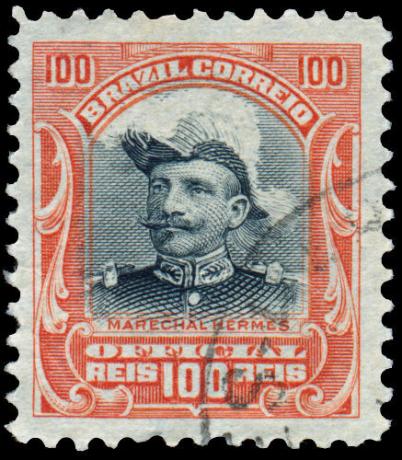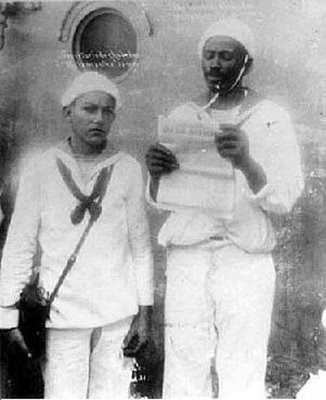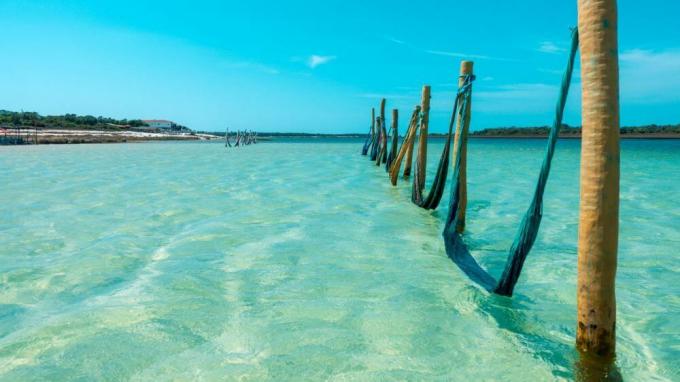THERevoltgiveswhip it was a riot organized by soldiers of the Brazilian Navy from 22 to 27 November 1910. The revolt organized by the sailors took place on Navy vessels that were moored in Guanabara Bay and was mainly motivated by the sailors' dissatisfaction with physical punishment.
Read too: Federalist Revolution - Republicans' dissatisfaction with the first presidents
Historical Background of the Chibata Revolt
The Chibata Revolt was known to have been a riot carried out by Brazilian sailors' dissatisfaction with physical punishment who suffered in the Brazilian Navy at the beginning of the 20th century. The physical punishment in question was the lash, practiced by the Navy against all sailors who violated the rules of the corporation.
The use of the lash as a form of punishment was a characteristic that the Brazilian Navy had inherited from the Portuguese Navy of the colonial period from a code known as Articles of War. This form of punishment was dedicated only to the lower ranks of the Navy., occupied, in general, by blacks and mestizos.
The sailors' dissatisfaction with physical punishment and the rigor of the Navy was growing. Reports say that, shortly before the revolt, during a trip near the Chilean coast, the sailors had shown dissatisfaction with the punishment meted out to a sailor. The trigger for the beginning of the revolt occurred when MarcellinRodriguesMenezes was punished with 250 lashes without the right to medical treatment.
In addition, it must be considered that the contacts of the sailors with foreigners also strengthened this dissatisfaction. if we consider that navies of other nations did not have the same practice (of physically punishing) with the sailors. It should also be considered that, about a year before the revolt, the leader of the mutiny, João Cândido, had been in England and was aware of the events of the battleshipPotemkin, in which Russian sailors rebelled against their country's government.
Regarding the Chibata Revolt, it is important to consider that it was not only the result of the sailors' dissatisfaction with physical punishment. The sailors, in general, came from poor families, who suffered from the social inequality existing in the First Republic. Thus, the Chibata Revolt is also considered by historians as a revolt against the social inequality and racial existing both in the Navy and in society as a whole.
Read too: Vaccination Revolt – one of the main popular uprisings in the Old Republic
How was the riot?
The Chibata Revolt began on November 22, 1910, as mentioned, after the punishment of a sailor named Marcelino. The sailors rebelled and took control of four Brazilian Navy vessels: Minesgeneral, They arePaul, Bahia and Deodorant. the revolting sailors demanded from the government an end to physical punishment; otherwise, the capital would be bombed. The leadership of this mutiny was carried out by JoãoCandid, the Black Admiral.
The revolting sailors wrote a manifesto summarizing their demands and sent it to the office of the president at the time, Hermes da Fonseca. Coincidentally, on the day the revolt began, the president was hosting a party in Rio de Janeiro to commemorate his inauguration as president.

It is not known for sure who was responsible for writing the manifesto with the demands of the sailors, but this document was considered to be very well written. Historians point out that it was probably created by AdalbertFerreiraRibas. Regarding this document and the demands requested in it, historian Sílvia Capanema states|1|:
[…] it was well written and handwritten, had several objective demands – end of corporal punishment, increase in pay, replacement of officers considered incompetent, improvement in the level of education of some sailors - and he summed up, in a thoughtful way, the central spirit of the sailors, who presented themselves as “Brazilian and republican citizens” who no longer “supported slavery in the Navy". As for the material aspects of the text, everything indicates that it was written – or written – by someone who mastered calligraphy and had beautiful writing.

Pressured both by threats from sailors and politicians, the government of Hermes da Fonseca accepted the proposed terms and ended corporal punishment in the Navy on November 26, 1910, and promised amnesty to everyone involved. The government's promise was not kept and, on November 28, a decree dismissed around 1,000 sailors for indiscipline.
After this, a second revolt in the navy started, this time, in the Naval Battalion parked on Ilha das Cobras. This second revolt, however, was violently massacred, and those involved were imprisoned and tortured on that island. Hundreds more sailors were sent to work in rubber plantations in the Amazon and many were shot along the way.
Note
|1| ALMEIDA, Sílvia Capanema P. in. Sailor's lives in republican Brazil: identities, bodies and leaders from the 1910 revolt. To access, click on here.
Image credit
[1] Zoltan Katona / Shutterstock
By Daniel Neves Silva
History teacher
Source: Brazil School - https://brasilescola.uol.com.br/historiab/revolta-chibata.htm



